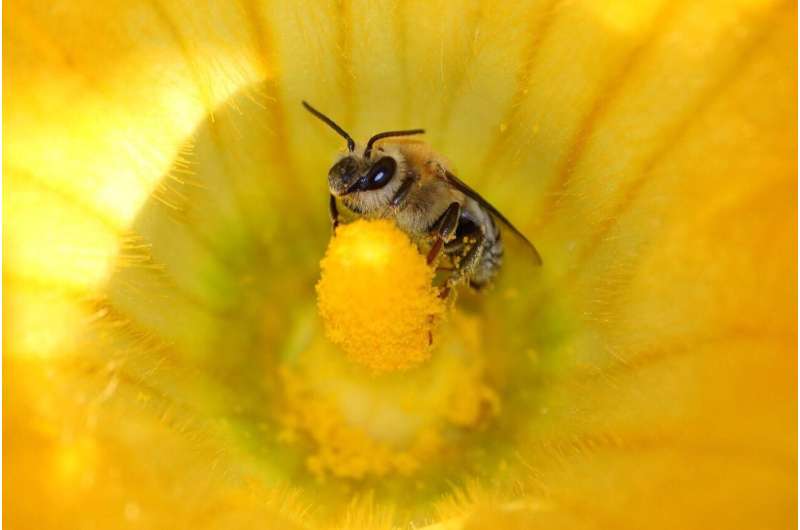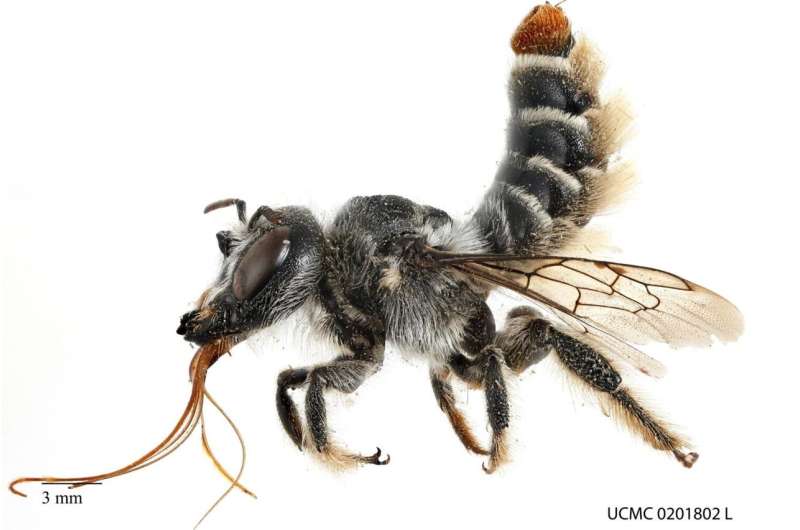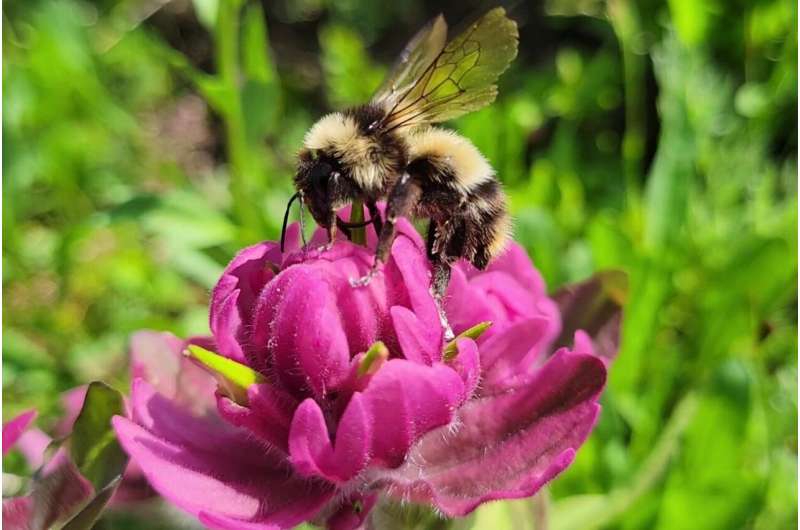This article has been reviewed according to Science X's editorial process and policies. Editors have highlighted the following attributes while ensuring the content's credibility:
fact-checked
trusted source
proofread
One in five Colorado bumblebees are endangered, new report says

On a cliffside at Mesa Verde National Park in southern Colorado, a fuzzy bee was industriously gnawing at the red sandstone. Making a loud grinding sound, the insect used its powerful jaws to drill tunnels and holes in rocks, where it would build a nest for raising offspring.
The bee, known as Anthophora pueblo, is a type of digger bee native to Colorado. Discovered less than a decade ago, the bee has quickly become Adrian Carper's favorite pollinator.
"This is just one example of how crazily diverse our native bees are," said Carper, an entomologist in the Department of Ecology and Evolutionary Biology at CU Boulder and the CU Museum of Natural History.
But those pollinators are in peril as a result of human activities, according to the first comprehensive report on Colorado's native pollinating insects published by Carper and his collaborators earlier this month.
The report summarized research on native pollinators in Colorado and found that in the last 35 years, populations of some pollinator species in the state have dropped by more than half. Scientists and environmentalists are petitioning for about 20% of Colorado's 24 native bumblebee species to receive federal protection under the Endangered Species Act due to a significant decline in their populations.
"That's a huge alarm call, and that's only for species we have good data for," Carper said, adding that this is likely an underestimate of the danger Colorado's native pollinating insects are facing.

In addition to bees and butterflies, other insects like beetles, flies and even mosquitoes also pollinate—many of them remain understudied. The report highlighted data from the Rocky Mountain Biological Laboratory, where even in a well-protected high-elevation meadow, the number of insects living there has dropped by 61% over the last 35 years.
Native pollinators are critical to Colorado's ecosystem, agriculture and tourism industry.
For example, the world-famous Rocky Ford cantaloupes, native to the small town in southeastern Colorado, are best pollinated by the state's native squash bees. These bees have evolved special hairs to carry the cantaloupe's particularly large pollen grains. In contrast, honeybees lack these special hairs and are inefficient at pollinating cantaloupe flowers.
"Our native bees have co-evolved with our native plants. We recreate in our beautiful high alpine mountains, because they are covered in colorful wildflowers, which wouldn't be there if they didn't have our native pollinators to help them reproduce. Additionally, those native plants are integral to our rangelands, supporting over $5 billion worth of livestock across the state," Carper said.
According to the report, habitat loss, pesticides, climate change and non-native species including honeybees, are the main threats to native pollinators' survival.
Insects are cold-blooded animals that rely on the environment to regulate their body temperature. Many pollinators might not tolerate higher temperatures, and extreme weather events like droughts and floods could wipe out insect habitats. Climate change also affects when and how many plants are flowering, influencing the availability of nectar and pollen, which are the key sources of food for pollinators.

Despite being an important agricultural pollinator, the western honeybee is a non-native species to Colorado. But with a growing interest in beekeeping, Colorado has seen a surge in the numbers of urban honeybee hives in recent years. Research has shown that these honeybees could compete with native bees for food, and potentially spread diseases and parasites.
"We need to better educate beekeepers on subjects like disease management and swarm control to mitigate honeybees' impacts on native pollinators," Carper said.
The report highlighted priorities for the state to conserve native pollinators, including creating and connecting patches of habitat to allow pollinators to move between areas, and reducing pesticide use.
For individuals, there is also room for action, Carper said.
"Planting with native plants in our own backyards can certainly support our native pollinators."
Provided by University of Colorado at Boulder




















